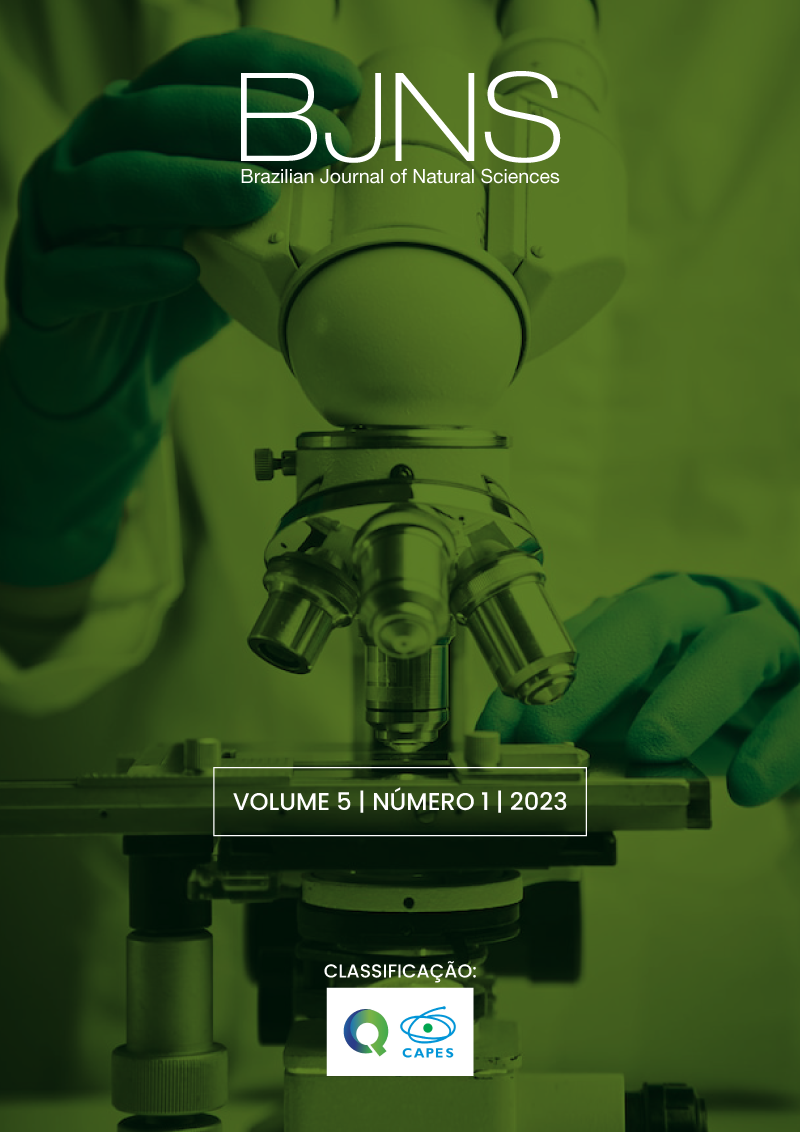Decontamination protocol in the production of herbal medicines: a short communication
Main Article Content
Abstract
Background: The effectiveness and safety of natural products depend not only on the inherent properties of the plant, but also on careful preparation, which includes critical steps such as cleaning to remove impurities and washing to eliminate surface contaminants. Thus, the scientific literature emphasizes the significance of thorough cleaning in ensuring botanical purity, directly impacting the ultimate quality of the product. Methods: The study utilized the plant species Cordia verbenacea, Alternanthera brasiliana, and Lippia alba, cultivated in Tatuí - SP, subjected to a rigorous selection process, and processed through a washing and drying protocol. The washing involved a two-stage process, including immersion in clean water and a sodium hypochlorite solution. Microbiological analyses were conducted on washed and unwashed samples, including enumeration of viable colony-forming units (CFUs) and detection of pathogens. Moisture content was determined using the oven drying method, and ash content was assessed following the Brazilian Pharmacopeia guidelines. Results: Microbiological results indicate the absence of Salmonella sp. and Staphylococcus aureus in all analyzed plant drugs, regardless of washing and stabilization conditions. Pseudomonas aeruginosa was observed only in unwashed/stabilized Cordia verbenacea and Alternanthera brasiliana samples. Escherichia coli was identified in an unwashed/stabilized Lippia alba sample. The washing/stabilization process significantly reduced total bacterial and fungal counts, especially when exceeding the limit set by the Brazilian Pharmacopeia (103 CFU/g). Total ash content remained unchanged after the washing/stabilization process in the three plant species, staying within the Brazilian Pharmacopeia limits (14%). Moisture content did not differ statistically between washed/stabilized and unwashed/unstabilized plant species and met Brazilian Pharmacopeia specifications (8-14%). Conclusion: The washing/stabilization process effectively reduced microbial load in Lippia alba, Alternanthera brasilians, and Cordia verbenacea, with no significant changes in ash and moisture content. Preliminary analysis suggests that processing control ensures minimum quality conditions, enhancing overall safety for consumers.
Article Details

This work is licensed under a Creative Commons Attribution-NonCommercial-NoDerivatives 4.0 International License.
Copyright Statement - Policy Proposal for Open Access Journals
Authors who publish in the Brazilian Journal of Natural Sciences (BJNS) agree to the following terms: 1 - Authors retain the copyright and grant the journal the right to first publication, with the work simultaneously licensed under the Creative Commons Attribution License allowing sharing of the work with recognition of the authorship of the work and initial publication in this journal. 2 - Authors are authorized to assume additional contracts separately, for non-exclusive distribution of the version of the work published in this journal (eg, publishing in institutional repository or as a book chapter), with acknowledgment of authorship and initial publication in this journal. 3 - Authors are allowed and encouraged to publish and distribute their work online (eg in institutional repositories or on their personal page) at any point before or during the editorial process, as this can generate productive changes, as well as increase the impact and citation of published work. This is an open access article under the CC-BY license
References
Smith, J. A. (2010). Clean and Green: The Importance of Plant Cleaning in Drug Preparation. Journal of Herbal Medicine, 15(2), 78-84.
Oliveira, R. S., et al. (2015). Optimizing Washing Techniques for Herbal Drugs: A Review. Journal of Pharmaceutical Sciences, 42(3), 129-135.
Silva, M. L., & Santos, A. B. (2018). Drying Techniques and Their Impact on Medicinal Plants. International Journal of Herbal Medicine, 5(2), 112-118.
Almeida, F. G., et al. (2019). Natural Stabilization Methods for Herbal Drugs: A Comprehensive Review. Phytotherapy Research, 26(4), 565-570.
INSTITUTO ADOLFO LUTZ. Normas analíticas do Instituto Adolfo Lutz:
métodos químicos e físicos para análise de alimentos. p. 1020. São Paulo. Instituto
Adolfo Lutz. 2008.
FARMACOPÉIA BRASILEIRA. 5 ed., Ed.; Atheneu, São Paulo, 2000.
Alvarenga, J.C.; Anndrade, H.B.; Bittencourt, W.J.M.; Brandão, G.C.; Pinto, J.E.B.P.; Bertolucci, S.K.V. Controle de qualidade de drogas vegetais à base de Cymbopogon citratus (DC) Stapf (Poaceae) obtidas no comércio de Lavras e Belo Horizonte-MG. Revista Brasileira de Plantas Medicinais, São Paulo, v. 19, n. 1, p. 31-36, 2017
Costa, R. P. C., Guimarães, A. L. A., & Vieira, A. C. M. (2014). Avaliação da Qualidade de Amostras de Plantas Medicinais Comercializadas no Brasil. Revista Ciência Farmacêutica Básica e Aplicada, 35(3), 425-433. ISSN 1808-4532.
Michelin, D. C., Finati, S. C. G., Sacramento, L. V. S., Vilegas, W., & Salgado, H. R. N. (2010). Controle de qualidade da raiz de Operculina macrocarpa (Linn) Urb., Convolvulaceae. Brazilian Journal of Pharmacognosy, 20(1), 18-22.
Garbin, L., Tiuman, T. S., & Krüger, R. L. (2013). Quality Evaluation of Medicinal Plants Distributed by Health Unit to Inner Cities of Paraná. Revista Ciências Exatas e Naturais, 15(1).
Sonaglio, D., Ortega, G. G., Petrovick, P. R., & Bassani, V. L. (2003). Desenvolvimento tecnológico e produção de fitoterápicos. In: Simões, C. M. O., Schenkel, E. P., Gosmann, G., Mello, J. C. P., Mentz, L. A., & Petrovick, P. R. (Eds.), Farmacognosia: da planta ao medicamento (5ª ed.). Porto Alegre/Florianópolis: Editora da UFRGS/Editora da UFSC.


